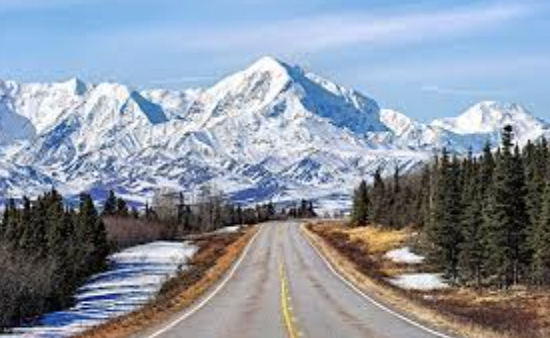The last frontier: Life in Alaska

Alaskan Road, (courtesy of Flickr)
One exits their homestead, entering into a bluster of snow. Jack Frost clings to the hands, transforming the skin pink. The time is roughly noon, but the sun has yet to shine—a sequential winter day in northern Alaska.
Alaska is off the mainland of the U.S. and connected to Canada. The vast majority of the state remains in the Arctic Circle.
The United States purchased Alaska from the Russians on March 30, 1867. It was incorporated as a state on January 3, 1959—the same year as Hawaii.
Alaska’s climate pattern stands out from the rest of the United States. It has extended Winters and brief Summers. In Winter, more so in the northern regions, the Sun fails to rise from mid-November to early January. During Summer, the days are extensive and the Sun lingers perpetually in the sky.
In the state known as the “last frontier,” it’s typical for the weather to be overcast, even during the Summer. This dark and grim weather has made it one of the most melancholy states to reside in.
According to the CDC, Alaska harbors a suicide rate of 27.5, the second highest in the U.S.
Alaska is the largest state in the U.S. at 665,400 square miles. It far surpasses Texas and California. The immeasurable vastness leaves 1.28 people per square mile.
The NHS lists loneliness as one of the top five causes of clinical depression and mental illnesses are a rising concern in Alaska. The winters can make it extremely difficult to connect with other people. The weather often snows people in, halting travel and communication.
Despite the consistent difficulties of living in Alaska, the state offers a beautifully untouched landscape. The untamed wilderness can be very appealing to some people. It allows one to connect with nature like no other. Travel Away rates Alaska as the third most beautiful state in the United States.
Another popular reason is that the state will pay you to move there and they have no income tax or sales tax. Alaska is one of the more economically feasible states to live in, with a lower COH (cost of housing). Rural areas typically have cheaper COH. The living wage in Alaska for someone with zero children is around $16 and for someone with one child, the wage is $18.
Alaska is one of the harshest states to live in for various reasons however, the bountiful beauty is limitless and contagious.
Your donation will support the student journalists of Highlands High School. Your contribution will allow us to cover our annual website hosting costs.


